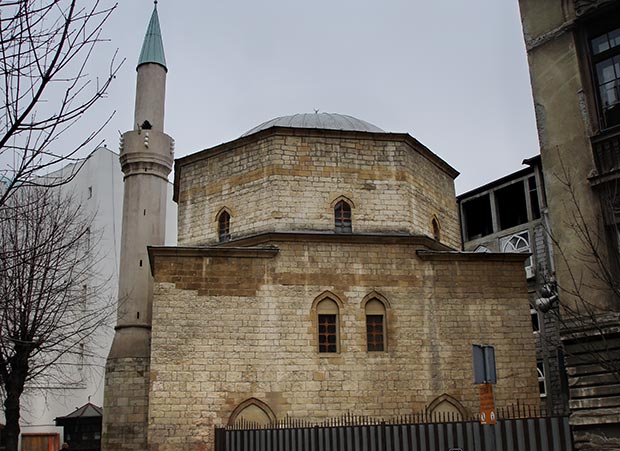Bajrakli mosque, the only remaining mosque in Belgrade
Mar 07, 2010 Architecture
 Bajrakli Mosque in Belgrade / photo by Islamic Arts Magazine
Bajrakli Mosque in Belgrade / photo by Islamic Arts Magazine
Belgrade, the capital city of Serbia, was under the Ottoman Empire from the first half of 16th century until the second half of 19th century. During that time, Belgrade became a major cultural center, along with some other cities in the Balkans, such as Sarajevo and Skoplje, with nearly 160 mosques, 7 public baths, about 7000 home bathrooms and 21 caravan-saray. However most of the buildings faced destruction, first by the Austrian Empire, and then by the Serbian authorities, who took over the city in 19th century.
From all buildings mentioned only one mosque, two tombs and part of the city walls were preserved to this day. These are the oldest parts of town. The only remaining mosque, named Bajrakli Mosque, was built in 1575. Originally it was named Cohadzi Mosque, after the fabric merchant Hadzi Alija (at that period fabric was named coha). Later the name was changed again to be finally called Bajrakli mosque, based on tradition that there was a flag on its minaret (flag was called bajrak) which would be a sign to other mosques that they can invite prayers to the prayer.
The mosque is now in good condition, although a few years ago was set on fire by Serbians, and then partially restored. It is one-space mosque with dome, larger dimensions. It carries some architectural features that are typical of the period when it was made. These characteristics make this mosque a very important historical building.
Comments
Add a comment